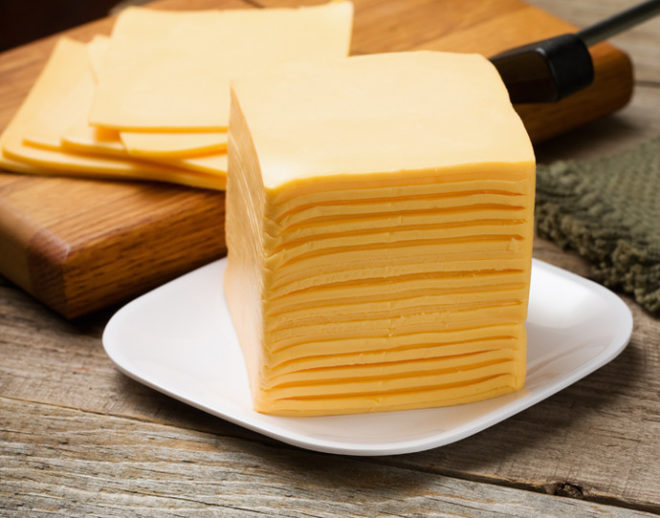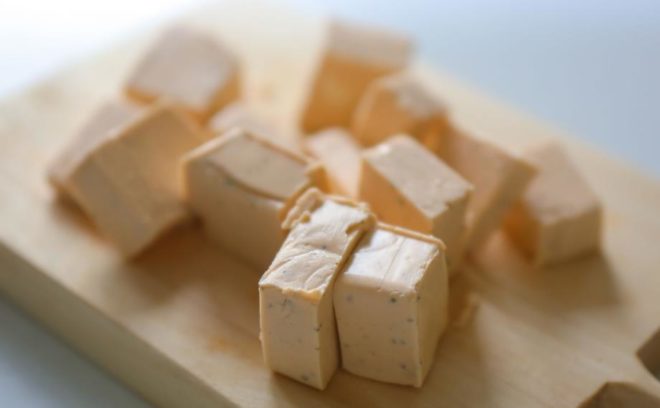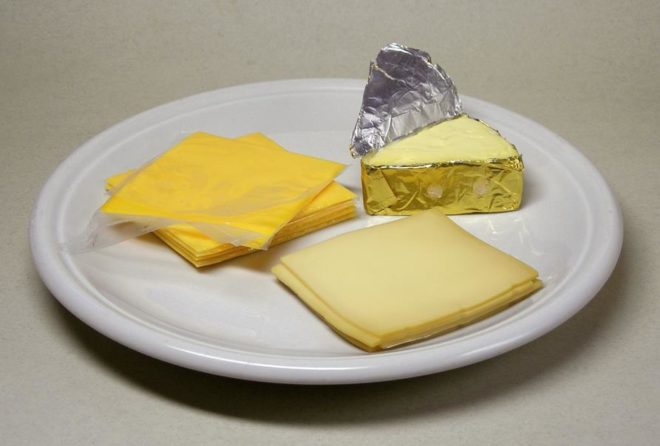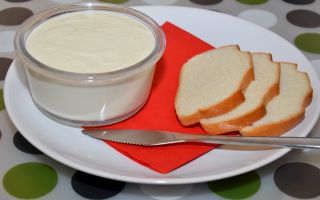Content
- 1 What processed cheese is made of
- 2 Composition and calorie content of processed cheese
- 3 Why processed cheese is useful
- 4 Processed cheese for weight loss
- 5 Homemade melted cottage cheese recipe
- 6 How to eat processed cheese
- 7 The harm of processed cheese and contraindications to use
- 8 How to choose and store processed cheese
- 9 Conclusion
Healthy cheese, made in the form of a soft mass, square slices or triangles, is a favorite product of most people. What are the benefits and harms of processed cheese?
What processed cheese is made of
The raw materials for the manufacture of the product are hard cheeses, which for some reason did not hit the counter: due to under-ripeness, over-ripening, improper formation of the cheese head. This does not mean bad quality at all: sanitary requirements in production are very high. In addition, after processing, you can get a completely different tasty and healthy product.
The manufacturing technology itself consists, as you might guess, in melting the mass at a temperature of 75 to 95 degrees. In the process, other components are added to the mass: butter, milk powder, cottage cheese, cream and salts, emulsifiers and preservatives. All these ingredients enrich the properties of the product and give it an ideal soft consistency.

Composition and calorie content of processed cheese
The product is quite high in calories: 100 g contains about 300 calories, although the exact figure may vary depending on the variety. Most of all fats in the product - about 23 g, proteins are present in large quantities - about 20 g, and carbohydrates account for only 2-2.5 g.
It is customary to consider a melted delicacy from the point of view of its pleasant taste. But its advantages include a high content of vitamins and microelements:
- vitamins A, C, E and PP;
- a wide group of B vitamins;
- vitamins H and D;
- a huge amount of calcium - the daily rate is only 100 g;
- potassium, iron, phosphorus and magnesium;
- the amino acids tryptophan, lysine and methionine;
- milk protein casein, extremely valuable for muscles.
Despite the fact that healthy cheese is made on the basis of milk, there is very little lactose in it - only about 2%. The product can be used even by those who are harmed by ordinary dairy products.

Why processed cheese is useful
Is there any benefit in processed cheese, or are its main positive properties nutritional and tasty? The product is definitely useful:
- strengthens nails, improves skin condition, gives strength and volume to hair;
- has a good effect on the liver and does not harm the blood vessels, since there is almost no cholesterol in it;
- supplies the body with full doses of essential amino acids and polyunsaturated acids;
- is a source of high quality protein and contains almost no carbohydrates.
So, for most healthy adults, the processed treat will actually benefit.

Can processed cheese during pregnancy and breastfeeding
Unfortunately, doctors recommend eliminating the product from the diet during pregnancy, or at least greatly reducing the amount. It has too much fat in it, which can harm the developing fetus. In addition, many curds are made using additives, emulsifiers, preservatives.
Processed cheese for nursing is also not recommended: during lactation, its benefits are negligible. But in infants, such food can cause colic, flatulence or allergies, so it is better to refrain from eating.
Processed cheese for children
Fats, salts and additives in the product can harm a child's body. It is categorically not recommended to introduce processed cheese into the child's diet until at least 3 years of age. And it is better to offer a treat for the first time when the child reaches 8-10 years old.

Processed cheese for weight loss
The properties of the product are not very suitable for inclusion in the diet. It is high in calories and high in fat.
True, there is a special diet for 5 days based on cheese and white wine. But its benefits are questionable: it is only suitable for people with very strong stomachs and good alcohol tolerance. In losing weight based on a healthy diet, the product is not used.
Homemade melted cottage cheese recipe
The product manufacturing technology is easy to repeat at home. You will need to take:
- cottage cheese - 1 kg;
- high-quality butter - 100 g;
- eggs - 2 pieces;
- milk - 1 liter;
- salt - a tablespoon;
- baking soda - a teaspoon.

The cooking process is as follows:
- The milk is properly heated, but not boiled, but removed from the heat when the first bubbles appear.
- Add cottage cheese to hot milk and stir well for 3-5 minutes before curdling.
- The curdled curd is transferred to cheesecloth folded several times and placed on top of a deep saucepan so that the serum is glass.
- The prepared butter is melted in a hot frying pan and eggs, soda and salt are added.
- Put the curd mass in a frying pan and stew the whole mixture over low heat for 15 minutes, stirring constantly.
The mixture will soon get a thick consistency and stop sticking to the pan. At this stage, the cheese is considered ready. It is removed from the stove, transferred to a container and covered with a lid. After cooling naturally for another 6 hours, they are put into the refrigerator, and then eaten.
Processed cheese at home differs from the factory one in composition. However, it is very healthy, since only natural products are used in the preparation.

How to eat processed cheese
Most often, the product is consumed with sandwiches. But healthy cheese can be combined with other dishes:
- salads and pasta;
- omelets and casseroles;
- pizza and cutlets;
- rolls and sausages;
- as a filling for rolls, pancakes, pies or stuffed dishes.
A useful product perfectly emphasizes the taste of meat and fish, vegetables and mushrooms, herbs. It is often found in soups, sauces and soft pates.

The harm of processed cheese and contraindications to use
In some cases, the benefits of processed cheese for the body can be harmful. The product has the following contraindications:
- obesity tendency;
- chronic gastritis, ulcers, pancreatitis and other serious diseases of the stomach and intestines;
- renal failure;
- hypertension and heart disease;
- allergy to one of the components of the product;
- pregnancy and lactation.

How to choose and store processed cheese
Pleasant taste and valuable properties are characteristic only of a natural product. You need to choose a treat in accordance with several rules.
- A quality cheese should have a soft texture, a uniform structure without cracks and a creamy shade.
- A too sharp pungent smell should not come from it, the more mold on the surface is unacceptable.
- The packaging must be airtight: an opened product is likely to be damaged and cause harm.
- Cheese should be called by this very word - in numerous "cheese products" the traditional technology of preparation is not observed.
You can store the cheese in the refrigerator, closed. As a rule, the maximum shelf life is about 2 months: during this time, valuable properties are preserved.

Conclusion
The benefits and harms of processed cheese balance each other out. With moderate use and no contraindications, a healthy snack will enrich the properties of many familiar dishes in the diet.

